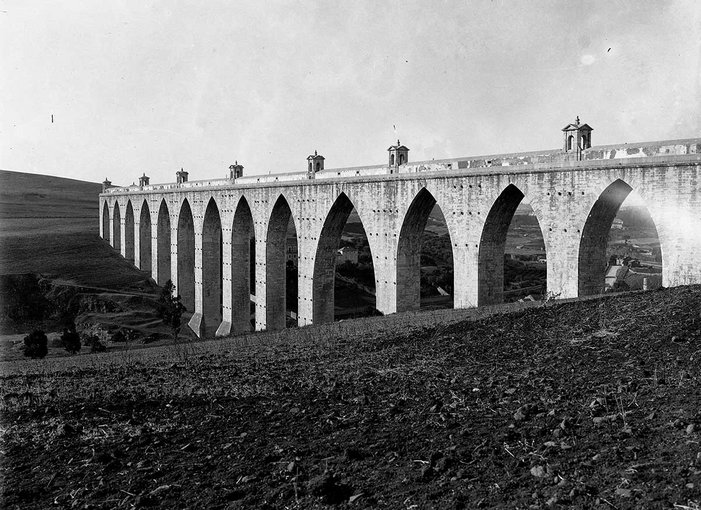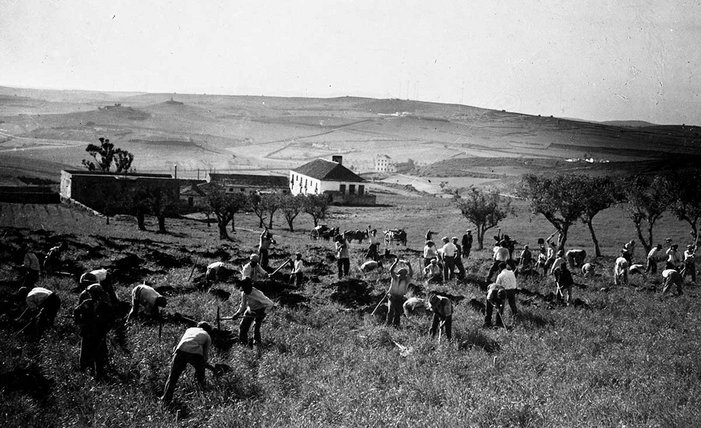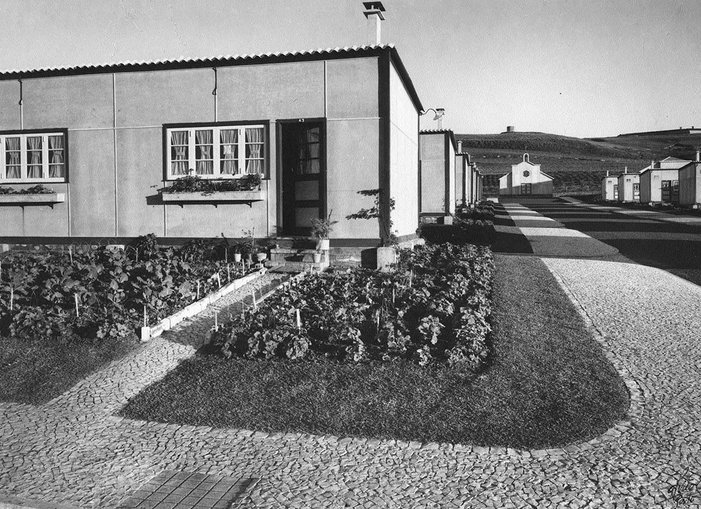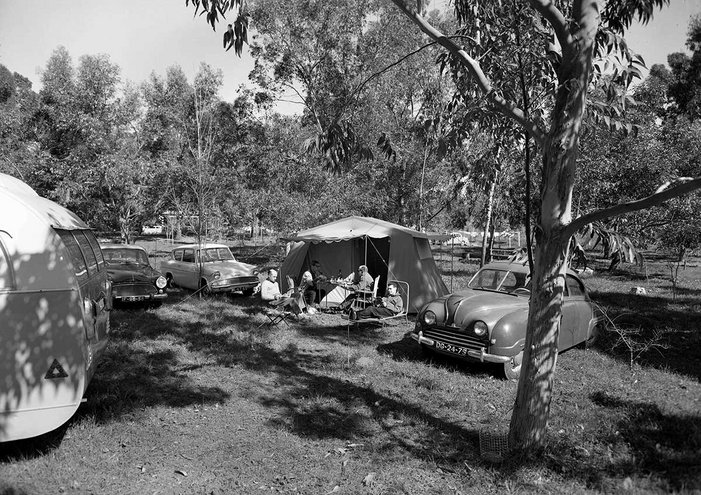90 Years PFM
History on a timeline

The idea of afforesting the Serra de Monsanto was born in the 19th century
Designed by forestry engineer José Maria de Magalhães and geologists Carlos Ribeiro and Nery Delgado. The purpose of this afforestation was to "supply the capital with wood and timber, while at the same time alleviating the aridity that travelers notice when they enter the Tagus" The idea, however, never came to fruition.
Creation of the Monsanto Forest Park
It came about through a Decree-Law issued by the Minister for Public Works, engineer Duarte Pacheco. To this end, the necessary land was to be expropriated (for public utility) and a deadline of six months was set for the project to be drawn up. The reforestation of the area was initially the responsibility of the forestry services, until CML, which was responsible for implementing the project, created the necessary nurseries.

Monsanto has begun to be planted
When Duarte Pacheco took on the role of Minister of Public Works as well as Mayor of Lisbon. Architect Francisco Keil do Amaral was hired to design it and the park became a reality, inspired by European urban forests. The afforestation project was the responsibility of forestry engineer Joaquim Rodrigo, under the guidance of forestry engineer Jorge Gomes de Amorim, head of CML's Parks and Gardens Department. The afforestation of the Serra de Monsanto was no easy task, almost all of the work was done by hand using a variety of laborers, from farm workers to soldiers and prisoners from the Monsanto Fort. Mocidade Portuguesa also took part in the afforestation of Monsanto, given the urgency involved in the whole project. The few trees that existed in the Serra were those of the Mata de São Domingos de Benfica, those of the Tapada da Ajuda, and a few olive trees that flanked the roads that divided the land.

Rehousing the former inhabitants of Serra de Monsanto
This resulted in the emergence of Bairro da Boavista and later Bairro do Caramão da Ajuda and the expansion of Caselas.

50s
Various facilities and buildings have survived to the present day, including the Moinhos do Mocho, Moinho de Alferes, Pedreira do Penedo, Luneta dos Quartéis, Parque Infantil do Alvito, Casa de Chá de Montes Claros and Clube de Ténis de Lisboa viewpoints.
As a curiosity, the Penedo Quarry, one of several, was where the raw material was extracted for the growing urban demand in Lisbon at the time.
The following are still active: the Alvito Playground, designed by architect Keil do Amaral in the 1950s and renovated between 2003 and 2005, while maintaining the original structure; the Moinhos do Mocho Viewpoint, which used two old disused mills to build its observatory; the Montes Claros Restaurant and Tea Room, which for years was used for the wedding reception offered by CML to the brides of Santo António. Today, the Montes Claros Hall is a venue for events.
The Lisbon Tennis Club, now known as the Monsanto Tennis Center, is almost as old as the forest park in which it is located. The building was designed by the architect Keil do Amaral and is a reminder of the architecture of the Estado Novo, surrounded by nature in an atmosphere that invites you to stay.

The 70s
Urban pressure grew stronger and stronger on the land of the forest park until, in the 1970s , Decree-Law 297/70 of June 27 was published, broadening the concept of public use of the park, promoting the construction of recreational facilities and services of public utility aimed at cultural, educational and information objectives.
